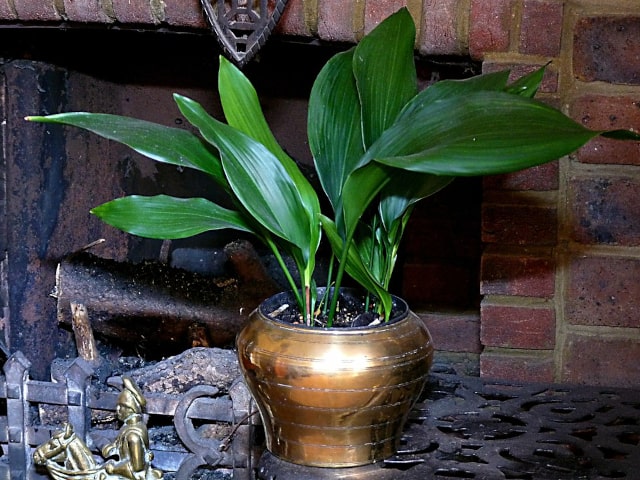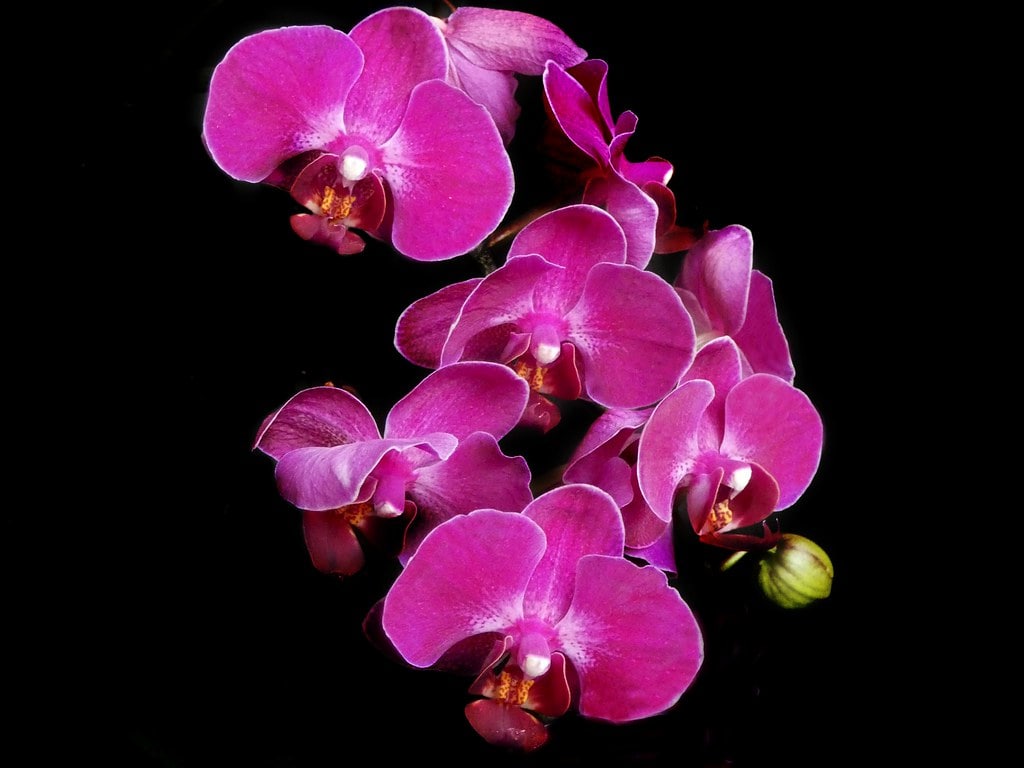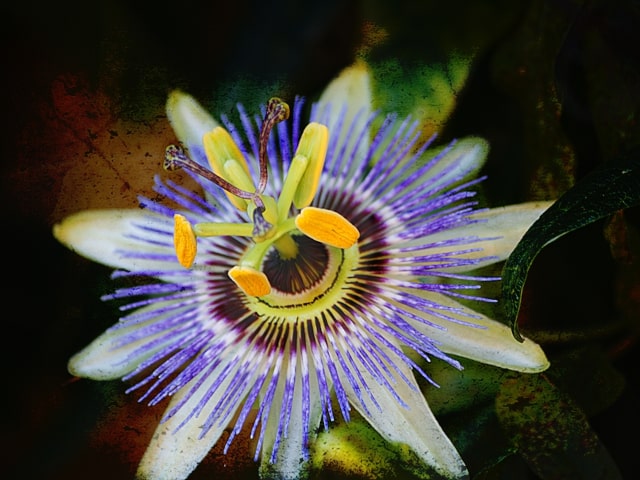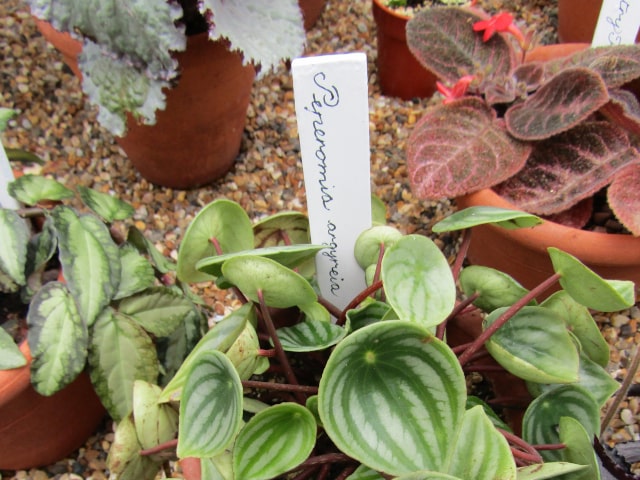
Peperomia plants are gorgeous and they can make a great addition to your home. In many ways, these are ideal houseplants. They come in a great variety of attractive foliage, and they can tolerate a wide range of conditions, so they are ideal even for those who don't have much experience with gardening.
These plants are native to tropical and subtropical areas of the world, particularly Central America. This means that the plant requires warm temperatures, around 65 to 80 degrees F and bright but indirect sunlight.
There are many different varieties of Peperomia plants and they are generally grown for their beautiful ornamental foliage and not for their flowers, which are not particularly striking. Since there are many different varieties, it is possible to chose very different looks.
These plants are generally compact: they rarely grow more than 12 inches in height when grown indoors. Only a few varieties tend to grow up to 2 feet indoors. You can choose between trailing and bushy varieties. Since the mature spread of the plant is only about 8 to 12 inches, they make great choices for indoor spaces. Another advantage is that they don't need to be repotted often.
Peperomia Varieties
There are many different Peperomia varieties you can grow in your home. Some of the most popular ones include:
Peperomia caperata, also known as Emerald Ripple Peperomia is known for its rosette-like appearance on its foliage that is very dark green, red or purple. The leaves have deep creases along the length, which makes them look textured, almost wrinkled. This is a compact variety, ideal for growing on a window or in a terrarium.
Peperomia argyreia and Peperomia sandersii, also known as Watermelon Peperomia, is popular because of its distinctive foliage that resembles a watermelon. The leaves have silvery stripes and are held by individual petioles that are commonly reddish in color.
Peperomia scandens, also known as Cupid Peperomia or False-Philodendron Peperomia is a low growing, trailing variety. It is characteristic for its light green, heart-shaped leaves that have a white or pale-yellow border. These can be grown in hanging baskets or allows to spill over the side of a planter.
Peperomia obtusifolia, also known as Baby rubber plant or Pepper face is an evergreen perennial that has an upright growth habit. It has succulent-like, dark green and oval leaves. This variant grows about 2 feet in height. Popular cultivars of this variant include "Marble", "Minima" and "Variegata".
Peperomia nivalis is a diminutive, creeping variant with strong succulent characteristics. It has thick, fleshy leaves with an unusual, folded shape.
Caring for Peperomia Plants
Here are some basic rules on how to care for your Peperomia plant:
Soil
Peperomia plants need a well-draining potting mix. It is essential, because overwatering is a big problem and can pose a lot of danger to these plants, so you need a soil that will avoid this. A good way to go is to use an equal mix of perlite or coarse sand and peat moss.
Light
Peperomia plants thrive in bright but indirect sunlight. A west or east facing window is typically the best spot in the home for these plants throughout the year. Just make sure that they never receive excessive direct sunlight during the summer.
Watering
It is important to water your Peperomia plant once the top 1 to 2 inches of the soil are completely dried out. Water thoroughly, then wait for the top inches of soil to dry out before watering again. Keep in mind that inadequate watering is the most common problem people encounter with Peperomia plants. Generally speaking, most varieties of this plant should be only watered every 7 to 10 days.
Humidity
Peperomia plants needs average humidity levels. There is a misconception that they often need high humidity, but this is true only for some specific varieties. Many Peperomia varieties have succulent characteristics and can tolerate low humidity levels.
Fertilizing
It is important to understand that Peperomia plants generally have low fertilizing requirements. If you fertilize too often, you will probably cause more problems than if you fertilize too infrequently. A balanced 10-10-10 water soluble fertilizer is a good choice. Apply it once per month during the growing season.
Repotting Peperomia
Keep in mind that Peperomia plants generally don't need to be repotted often. They generally do better in containers that are tad bit small. You can repot your plant every 2 to 3 years. This will prevent the potting mix from becoming too compacted. Compacting is dangerous because it reduces drainage. You can repot it in a container of the same size or a bit bigger.
When repotting, prepare your soil mix. Add half of the new potting mix to the pot. After this, gently remove Peperomia from its current container and remove as much of the old potting mix around the roots as you can. Carefully, place the plant into is new pot and start adding the remainder of the potting mix around the plant. Make sure to firm it gently around the roots, but never compact it too much. Water the plant thoroughly to help it settle into its new container.
Pruning Peperomia
Peperomia plants tolerate pruning really well, so you don't need to be scared of harming your plant while doing it. When pruning, make sure to remove any dead or damaged leaves and stems. It is important to always monitor your plant carefully and notice any possible changes so you can address the issue as soon as it appears.
Propagating Peperomia
The good news is that it is really easy to propagate Peperomia plants. This is a great way to get more plants for your home, or you can give them as gifts to your friends and family. There are two main methods of propagating Peperomia: through leaf cuttings and through stem cuttings. Your chosen method of propagation will depend on the Peperomia variety that you have, as well as your individual preference. However, keep in mind that variegated varieties are generally better propagated through stem cutting, since this method preserves leaf variegation better.
Propagating with Leaf Cuttings
To propagate Peperomia with leaf cuttings, make sure to prepare a propagation tray or pots in advance. Get a nice potting mix: it should contain equal parts of perlite and potting compost. Also, make sure that the tray and pots are sterile, because this is the only way to prevent the spread of diseases.
To begin propagation, cut a healthy leaf off the plant. You can choose one from the base of the stem or you can cut with a little stem attached. While it is possible to use a whole leaf for propagation, it is recommended to cut the leaf in two across the width. After this, dip the cut edges into the rooting powder. This will encourage the root growth.
In the potting media, make a small channel and insert the leaf cutting about half of an inch to an inch into the potting mix. Make sure that you place the cutting with the cut edge down into the soil. Firm the soil around the cutting.
Water the tray or container and cover the cuttings with a plastic bag. Keep the propagating plants in bright but indirect light in a regular room temperature. For a few hours per day, remove the cover. This will prevent the buildup of excessive humidity.
You will notice after a while that the plant is developing new roots from the cut edge of the leaf. New shoots and eventually leaves will start to develop. Once the plant is growing strongly and has a few new sets of leaves, you can repot them in individual containers and grow them in a regular manner.
Propagating with Leaf Cuttings
Ideally, you should do this in spring, because this is when the new growth is most vibrant. To propagate from stem cuttings, prepare trays and containers in the same way as for leaf cuttings. After this, cut a healthy stem off the plant. Ideally, it should be one that has three pairs of leaves on it. Make sure to use sterile scissors.
Remove the bottom pair of leaves, so you have a short section of stem exposed. Dip this cut end into the rooting powder to encourage root growth.
Make a hole in the potting media and insert the cutting. Firm the soil around the cutting. Water thoroughly and cover with the plastic bag. Make sure to uncover the cuttings for a few hours per day.
Peperomia Diseases and Pests
Peperomia plants tend to be resistant to diseases, but there are some issues that can appear. The most common disease that effects this plant is Pythium, which causes root and stem rot. It is also very serious, because it can kill the plant. This is a fungal infection and the only potential solution is pruning all the affected stems and roots and then repotting the plant.
Brown or black spots on the leaves is a sign of infectious leaf spot disease, such as Cercospora leaf spot, Phyllosticta leaf spot or Rhizoctonia leaf spot. To solve this issue, make sure to remove your plant away from the others and remove the infected parts of the plant. When pruning, make sure to use sterile scissors and to remove diseased foliage immediately. Don't be afraid to prune aggressively.
Peperomia plants are generally resistant to pests, but they can be affected by mealybugs, fungus gnats and mites. Using insecticidal soap to remove pests is a good course of action. Make sure to monitor your plant regularly to notice any problem developing. This is the best way to go, because you can address the problem as soon as it appears.
There are some specific problems you may encounter with your Peperomia plants, so it is important to know how to solve those issues:
- Wilting. Peperomia plants can wilt generally for two reasons: overwatering and underwatering. Underwatering causes the plant to have dry, wrinkled and wilting leaves, often with crispy tips. Also, the soil will be dry to the touch and all the way to the bottom. The solution to this problem is to water your plant more often. Overwatering is a more serious problem. Wilting caused by it is actually a sign of a root rot. This is a serious condition that can kill the plant. You will recognize overwatering by wet soil. If this happens, make sure to cut on watering immediately because root rot is a serious issue that can not always be remedied. One possible course of action is to repot your plant. Trim any damaged foliage and move the plant outside of the container. Remove as much of the wet, waterlogged soil from the roots. Make sure to remove diseased roots using a sterile pair of scissors in order to prevent the root rot from spreading. After this, repot the plant with a new potting mix that includes equal parts of perlite and potting compost. Once it is repotted, only water lightly and leave it at least for a week before watering again.
- Leaves Dropping. This is another common problem, and it can be either a normal occurrence or a sign of an issue. Remember that a Peperomia plant will often shed some of the older leaves as it develops new ones, so it might be a signal or regular growth. However, if you notice your Peperomia dropping leaves from different areas of the plant, it might be a sign that it is damager or that you are overwatering it. In some cases, leaves dropping can be also a sign of infestation or a disease, so you need to examine your plant closely. Pay attention to the backs of the leaves.
- Yellow Leaves. There are multiple causes for this, such as improper watering or a reaction to sudden changes in temperature. Excessive sunlight is one of the main reasons for the yellowing of leaves. Keep in mind that Peperomia plants generally do well in bright but indirect sunlight, they can get burning on the leaves if they are under strong direct light. If you notice yellowing of fading of the leaves, make sure to move your plant to a different spot. On the other hand, yellowing of the leaves can be a sign of overwatering, which can be a big problem (see above for "wilting" on how to save your plant if this happens.)
- Curling of the Leaves. This is not such a common problem, but it can happen. It is often a sign of nutrient deficiency or insects. If this happens, you should inspect your plant to see if there are any pests present. If you find them, make sure to remove them with insecticidal soap. If there are no pests, then nutrients may be a problem. Calcium deficiency can cause the curling of the leaves.
Toxicity
The good news is that Peperomia plants are not toxic for humans and pets. It means that you can safely grow it in the household with cats, dogs and other pets. Similarly, people with small children don't have to worry. Peperomia is not toxic so it is possible to grow it in a household with infants.
Additional Tips
Here are some additional tips for growing and taking care for Peperomia plants:
- It is important to make sure that your Peperomia is healthy, and this starts with purchase. It is best to buy your plant in a reputable garden center or nursery. These plants are sensitive to low temperatures, so proper transport and storage are important. When choosing a plant, check leaves for signs of poor health or damage, such as yellowing, black spots, wilting or physical damage. Always look both on the top and on the underside of the leaves.
- Many variants of Peperomia resemble succulents and have numerous succulent characteristics. This basically means that they have specific adaptations that allow them to store water or to reduce water loss. Keep in mind that succulents are not specific categories of plants but adaptations. When it comes to Peperomia, its variants are not completely regarded as succulents, but some have some degree of succulence. Examples of variants with succulent characteristics include Peperomia graveolens, Peperomia rotundifolia and Peperomia dolabriformis.
- If you notice your Peperomia not doing well, the first thing to change are water and light. If these elements of the care are right, your Peperomia has all the chances to grow strong and healthy.
Photo credit: elaine




0 Comments